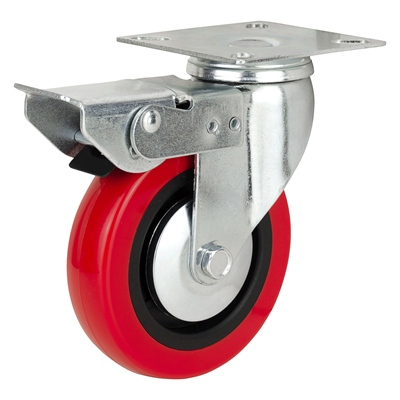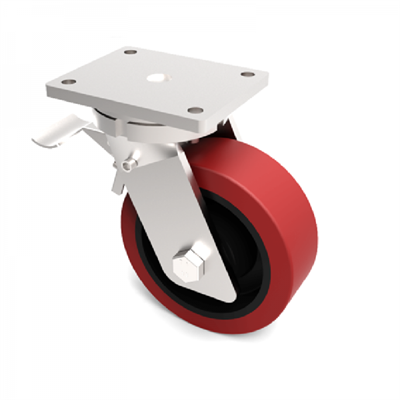Proper maintenance of rigid casters is essential to ensure their longevity and optimal performance. Here are some maintenance tips to keep your rigid casters in good condition:
- Regular Inspection: Perform routine visual inspections of the caster wheels and mounts. Look for signs of wear, damage, or loose components. Inspect for any foreign objects or debris that may be caught in the wheels.
- Clean the Wheels: Clean the caster wheels regularly to prevent the buildup of dirt, debris, and grease. Use a brush or compressed air to remove contaminants that could affect smooth rolling.
- Lubrication: Apply a suitable lubricant to the moving parts of the casters, such as the wheel bearings and axles. Lubrication reduces friction, minimizes wear, and prolongs the life of the caster.
- Tighten Fasteners: Check and tighten any screws, bolts, or nuts that may have come loose over time. Ensure that all mounting hardware is secure to prevent caster wheels from wobbling or detaching.
- Brake Inspection: If your rigid casters have brakes, inspect and test them periodically. Ensure that they engage and disengage smoothly. Adjust or replace brakes as needed to maintain control over your equipment.
- Wheel Replacement: When caster wheels show signs of significant wear, such as flat spots, chipping, or excessive deformation, consider replacing them. Choosing the right replacement wheels with the correct load capacity is essential for safety and performance.
- Check Load Capacity: Verify that the casters are not being overloaded. Make sure that the load is distributed evenly across all caster wheels. Overloading can lead to premature wear and caster failure.
- Environmental Considerations: In harsh environments, such as areas with extreme temperatures or exposure to chemicals, choose casters designed for these conditions to prevent damage and premature wear.
- Avoid Over-Tightening: While it’s important to ensure that mounting hardware is secure, be cautious not to overtighten it, as this can restrict the movement of the caster wheel and cause premature wear.
- Floor Conditions: Pay attention to the condition of the floors in your workspace. Rough surfaces, debris, and obstructions can lead to caster wear and damage. Keep the floor clear of any potential hazards.
- Caster Positioning: Ensure that the caster wheels are positioned correctly to provide proper support and even weight distribution. Misalignment can lead to uneven wear and reduced caster performance.
- Proper Use and Training: Train personnel in the safe and correct use of equipment with rigid casters. Ensure that users are aware of load limits and how to handle equipment safely.
- Replacement Parts: If replacement parts are needed, such as mounting brackets, choose high-quality components that match the specifications of the original casters to ensure compatibility and performance.
By following these maintenance tips, you can extend the life of your rigid casters, maintain smooth and reliable movement of equipment, and reduce the risk of accidents due to caster failure. Regular maintenance is a cost-effective way to prevent premature wear and avoid unexpected downtime.


